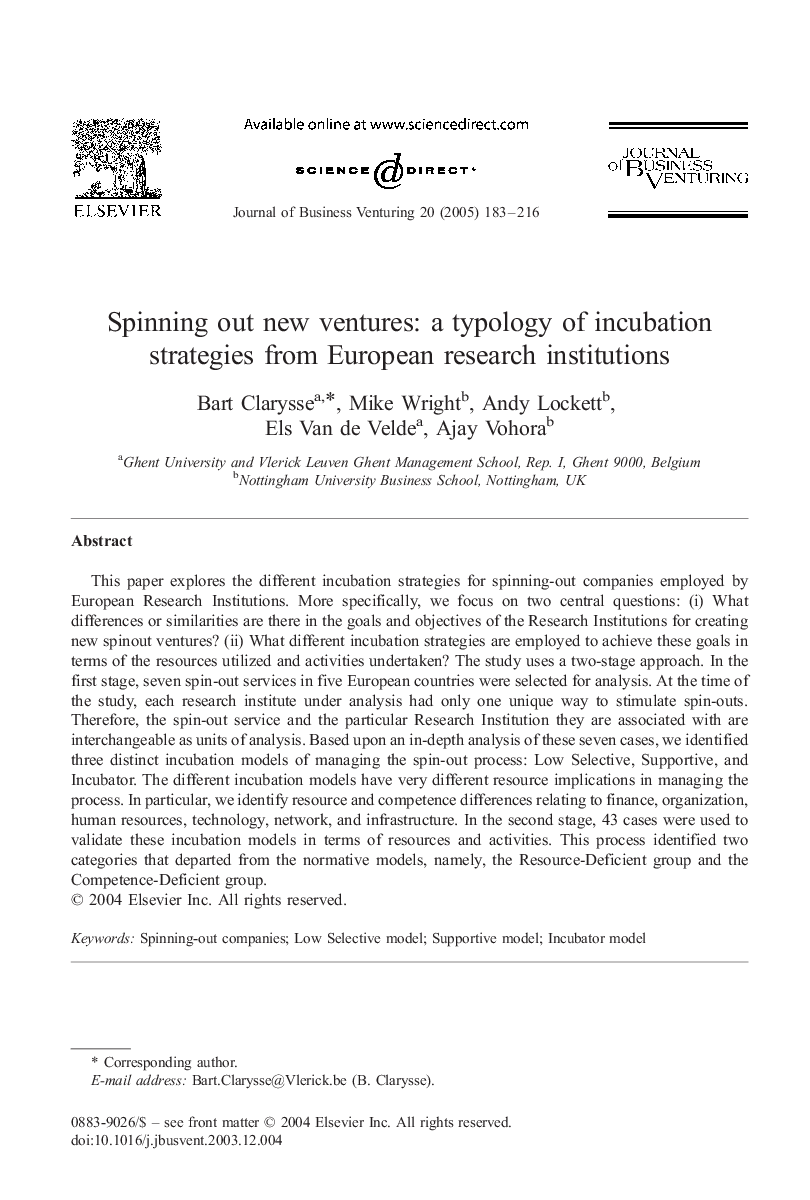| Article ID | Journal | Published Year | Pages | File Type |
|---|---|---|---|---|
| 10494065 | Journal of Business Venturing | 2005 | 34 Pages |
Abstract
This paper explores the different incubation strategies for spinning-out companies employed by European Research Institutions. More specifically, we focus on two central questions: (i) What differences or similarities are there in the goals and objectives of the Research Institutions for creating new spinout ventures? (ii) What different incubation strategies are employed to achieve these goals in terms of the resources utilized and activities undertaken? The study uses a two-stage approach. In the first stage, seven spin-out services in five European countries were selected for analysis. At the time of the study, each research institute under analysis had only one unique way to stimulate spin-outs. Therefore, the spin-out service and the particular Research Institution they are associated with are interchangeable as units of analysis. Based upon an in-depth analysis of these seven cases, we identified three distinct incubation models of managing the spin-out process: Low Selective, Supportive, and Incubator. The different incubation models have very different resource implications in managing the process. In particular, we identify resource and competence differences relating to finance, organization, human resources, technology, network, and infrastructure. In the second stage, 43 cases were used to validate these incubation models in terms of resources and activities. This process identified two categories that departed from the normative models, namely, the Resource-Deficient group and the Competence-Deficient group.
Related Topics
Social Sciences and Humanities
Business, Management and Accounting
Business and International Management
Authors
Bart Clarysse, Mike Wright, Andy Lockett, Els Van de Velde, Ajay Vohora,
